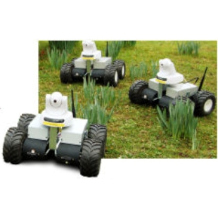ALBINO
Artificial Biochemical Networks: Computational Models and Architectures
- EPSRC grant EP/F060041/1: York (Electronics/CS/Biology): September 2008 - August 2013
- Principal Investigator: Andy Tyrrell
- Co-investigators: Susan Stepney, Leo Caves
- Research Associate: Mic Lones
- Research Students: TBC
Previous work by ourselves and others has shown how the structure and organisation of biological organisms can motivate the design of computer hardware and software, with the aim of capturing useful properties such as complex information processing and resistance to environmental perturbation. This project focuses upon one of the most complex sets of structures found in biological systems: biochemical networks. These structures are fundamental to the development, function and evolution of biological organisms, and are the main factor underlying the complexity seen within higher organisms. Previous attempts to build hardware and software systems motivated by these structures has led to a group of computer architectures which we collectively refer to as artificial biochemical network models. The best known of these is the artificial genetic network, which has shown itself to be an effective means of expressing complex computational behaviours, particularly within robotic control. Nevertheless, this field of research has received relatively little attention, and little is known about the computational properties of these architectures. The aim of the proposed work is to develop better artificial biochemical network models, which we will do by both bringing together existing work and introducing new understanding from the biological sciences. We will also develop a theoretical framework to better understand what these computational architectures are capable of, and show how how these models can be applied to the difficult problem of controlling a robot in real world environments. It is expected that this work will also produce insights into the function and evolution of the biological systems on which the architectures are modelled.

